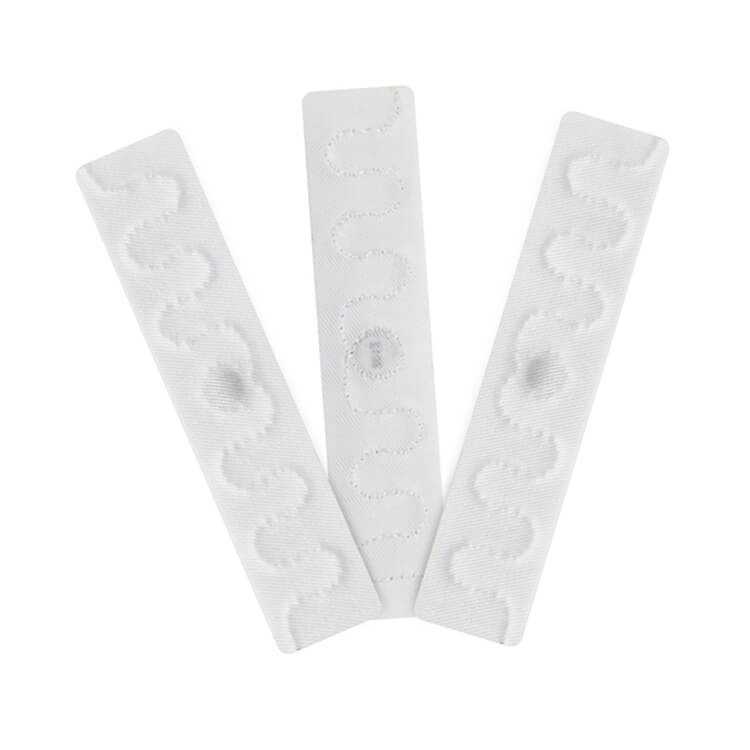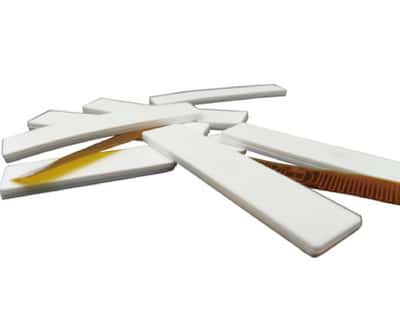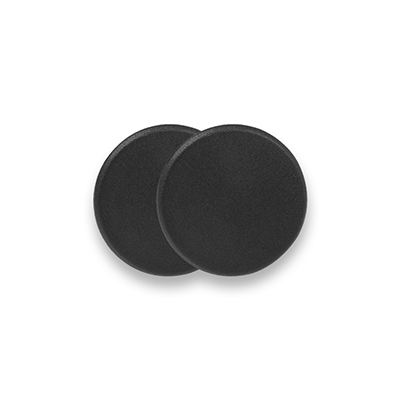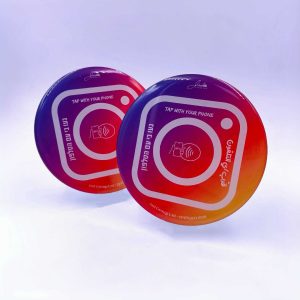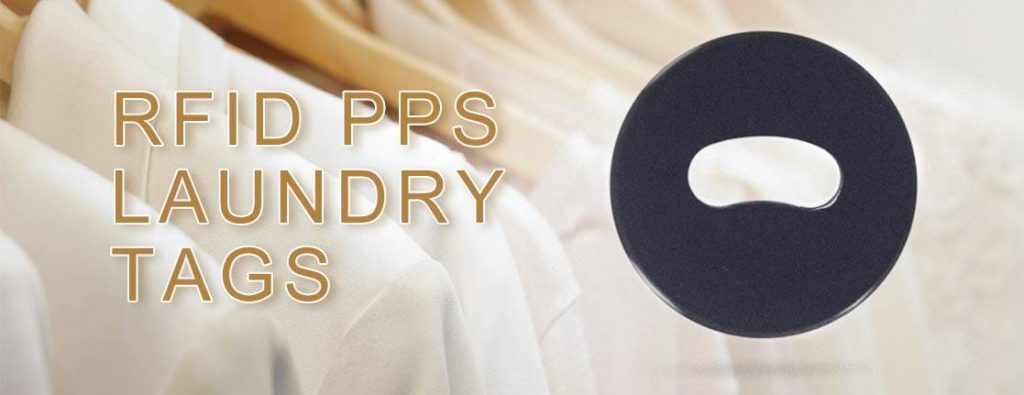
RFID tags on clothes has revolutionized the textile and apparel industries. It has modernized clothing production, storage, distribution, and retail.
Use RFID tags on clothes ?
RFID is an identification technique that consists of tags, readers, and application software.
RFID tags on clothes are small objects that can be easily affixed to a variety of surfaces. It contains a chip that stores data specific to your desired product.
On the RFID tags on clothes, you can encode information such as the price, batch number, manufacturing date, and company name.
The RFID tag reader will continuously emit radio waves in order to collect data from a nearby tag. Once the tag approaches the RFID reader, it will be activated to release the stored information.
The data is then transmitted to the application software, where it is analyzed and made available in an easily digestible format.
RFID Tag Application in the Clothing Industry
Now that you understand how RFID works, let’s examine how this technology has revolutionized the apparel industry.
In this industry, there are numerous production lines. They consist of:
Design and planning
Production
Sampling
Packaging Distribution
If you fail to monitor all production lines, costly errors are likely to occur. For instance, a mistake in the design phase may result in losses for the final product.
Before technological advancements, manufacturers conducted time-consuming and expensive manual inspections.
As a result, the majority of manufacturers have adopted RFID technology to streamline operations. This technology entails embedding a RFID tags on clothes containing all the relevant information about a specific garment.
The chip will store data that will guide the manufacturing process. Thus, it will be straightforward to detect errors before they cause losses.
RFID versus Barcode Technology in the Clothing Industry: Which Is Better?
Barcode technology has been utilized for a considerable amount of time. However, it has a number of shortcomings that make product identification and tracking difficult.
For instance, barcode technology requires a direct line of sight for optimal performance. This concept will require a significant amount of time to identify and track large quantities of clothing. Additionally, the technology can only track a single item at a time.
RFID technology, on the other hand, is relatively faster. It is not necessary to have a straight line of sight. Even better, you can easily track multiple products simultaneously.
Overall, RFID technology is less expensive and ensures a superior identification and tracking experience. Here are additional RFID system advantages over traditional barcode systems:
Long-Lasting. RFID tags on clothes are less susceptible to adverse environmental conditions than barcodes. As a result, you can be confident that they will last a long time, saving you money on repair and replacement costs.
A Wider Read Range. There are both passive and active RFID tags. The passive ones can transmit data up to one meter away to a reader. The active ones have a maximum read range of 100 meters.
It Reads Several Tags. RFID readers, unlike barcode systems, can collect data from multiple tags simultaneously.
Read and Write Capability The barcode system provides only a read function. Once the barcode label has been printed, it cannot be altered without printing a WXR with the new information. When RFID tags on clothes are used, this issue will be resolved. They provide both read and write capabilities, allowing you to modify the data stored in its memory as necessary.
RFID tags on clothes Are More Capable. RFID tags have dynamic memory storage capacities that allow for greater data storage than barcodes.
Simple Application. In most instances, it will not be difficult to switch from barcodes to RFID. Even better, you can attach printable labels to RFID tags, allowing you to simultaneously use barcodes and RFID.
What are the advantages of RFID tags for the apparel industry?
RFID tags on clothes allow for improved production process management. It will allow you to monitor the production, storage, and sales of your clothing with minimal human intervention.
Therefore, adopting this technology will reduce your expenses without compromising the quality of your products. The decrease in production costs will result in a rise in profit margins.
Here is a summary of some of the benefits you will receive by implementing RFID tags in the apparel industry:
Improved Inventory Management
In order to maintain production continuity in a bustling clothing factory, you must keep track of your inventory. Due to the large number of items that must be monitored, this procedure can be challenging.
Technology is the only solution for a cluttered and disorganized factory. RFID tags are especially useful for locating and tracking your inventory at various stages of production.
If you wish to take advantage of RFID technology, you must purchase RFID tags and embed them in your garment inventory.
These tags will help you identify the location and stock levels of a specific item in real-time. Thus, you will replenish your inventory before it runs out.
Offers enhanced control and visibility
Utilizing RFID tags on clothes, inventory will be automatically tracked. Thus, you will have access to the real-time stock levels of your industry without input from your employees.
Additionally, RFID tags on clothes facilitate supply chain monitoring, product identification, and damage detection.
Combat Fraudulent Products
Designing and producing clothing can be an expensive endeavor. If you want to see a return on your investment, you must reduce the number of counterfeits on the market.
Consider RFID technology as an option for achieving this objective. The system will enable your retailers to recognize and reject counterfeit products.
If you’re wondering how RFID tags can be used to combat the counterfeiting problem, here’s how:
You will attach RFID tags to each of your garments (in batches). When the stockiest receives their batch, they will use an RFID reader to scan it. If the batch is genuine, the RFID tag will reveal all of the stored information.
Low operating expenses
Implementing an RFID system will reduce your operational expenses. In various production processes, it reduces the need for human resources.
Even better, RFID tags are durable, eliminating the need for maintenance and replacement. The tags are impervious to mud, grime, and other damaging environmental conditions.
It is Rapid and Dependable
With a functional RFID system, you will receive real-time updates on various factory processes. You will monitor the availability of raw materials, the quantity of finished goods in inventory, and the supply chain.
This will eliminate delays caused by missing links between different stages of production.
Follow Samples
Keeping track of your samples is an ideal method for managing your prototypes. When you send out samples of your designs, it is likely that your prototype will be stolen. If this occurs, it is likely that your design products will be on the market before you begin production!
As a result, you should always implement a thorough sample tracking system to safeguard your originality. RFID tags technology is one of the most reliable methods for achieving this goal.
With this technology, you will be able to easily track your samples after they have left the showroom. This will increase your profitability and production efficiency by decreasing sample losses.
Data Security
Using RFID systems guarantees the security of your data. The RFID tags include a chip with a unique, non-replicable identification number. This feature will protect your organization from data breaches and other recording errors that could otherwise be costly.
RFID systems are also equipped with a complex data encryption system that prevents unauthorized access to the data.
In addition, numerous RFID tags include a distinct anti-theft feature. The relay output function closes the relay channel immediately following data reading. In addition, it activates an alarm system to signal any unauthorized access attempt.
Organize Events
Numerous events, ranging from annual fashion shows to periodic cloth displays, characterize the fashion and clothing industry.
Due to the complexity of the events, you are required to invest in an RFID tag system. This technology will be of assistance to you in the following ways:
Manage Event Registration. In such situations, registration and clearance must be expedited. Consequently, RFID wristbands can be used to authorize guests and grant them access.
Inventory Management Made Simple Some fashion events necessitate consistent follow-ups. As such, you must maintain attendance records. You will be able to create customized messages convincing participants to promote your clothing line with ease.
Order Management Made Simple. It is likely that you will receive orders for your products during the events. If you are not careful, you will lose track of these orders, resulting in a loss of customer confidence. With an RFID system, you will be able to store order details and provide prompt service to customers.
Administrate Invitation Cards If you host an event by invitation only, you must have a way to identify guests with invitation cards. In this case, RFID readers will be installed at the entrance. They will detect the invitation cards (which contain a tag) and grant visitors access to the venue.
Utilizing RFID technology in event management ensures efficient operations. The convenience ensures that you can effectively manage your time. In this manner, you will earn your clients’ trust, which will ultimately benefit your business.
Enhanced Customer Relationship Administration
If you wish to succeed in the fashion industry, you must always distinguish yourself. To accomplish this, you must comprehend your customers’ tastes and preferences.
RFID technology enables you to understand how your customers behave in various environments. With this information, it will be simple to provide personalized services to all of your customers.
For instance, if your products are connected to an RFID system, you will monitor the purchasing patterns of your customers. The purchase history enables you to target customers with customized messages. This will increase conversion rates and increase your business’s profitability.
What Challenges Does the Use of RFID Tags in the Clothing Industry Pose?
RFID technology has several disadvantages that make its implementation relatively challenging, despite its many advantages. They consist of:
High Price. RFID systems will be more expensive to acquire and install than barcode systems. The price will be determined by the volume of usage and the compatibility with your current systems. Before committing to an RFID system, you should conduct a needs analysis to ensure a favorable return on investment.
Compatibility. If the RFID system is incompatible with your existing infrastructure, you can expect its implementation to be time-consuming and expensive. Nevertheless, you can disregard this factor because the technology is sustainable and the benefits you will obtain are immense.
Incompatibility with Other Technologies. The RFID system transfers information via radio waves. It is susceptible to interference from metallic and liquid environments, as well as radio waves from other devices. As such, you should first determine whether the RFID system can operate optimally in your operational environment.
RFID technology offers numerous benefits to the apparel industry. It provides efficient tracking systems and aids in inventory management. However, the system may have a number of drawbacks.
Therefore, before investing in the technology, you should carefully weigh its advantages and disadvantages. Overall, you can rest assured that RFID tags will increase your production and profits.






